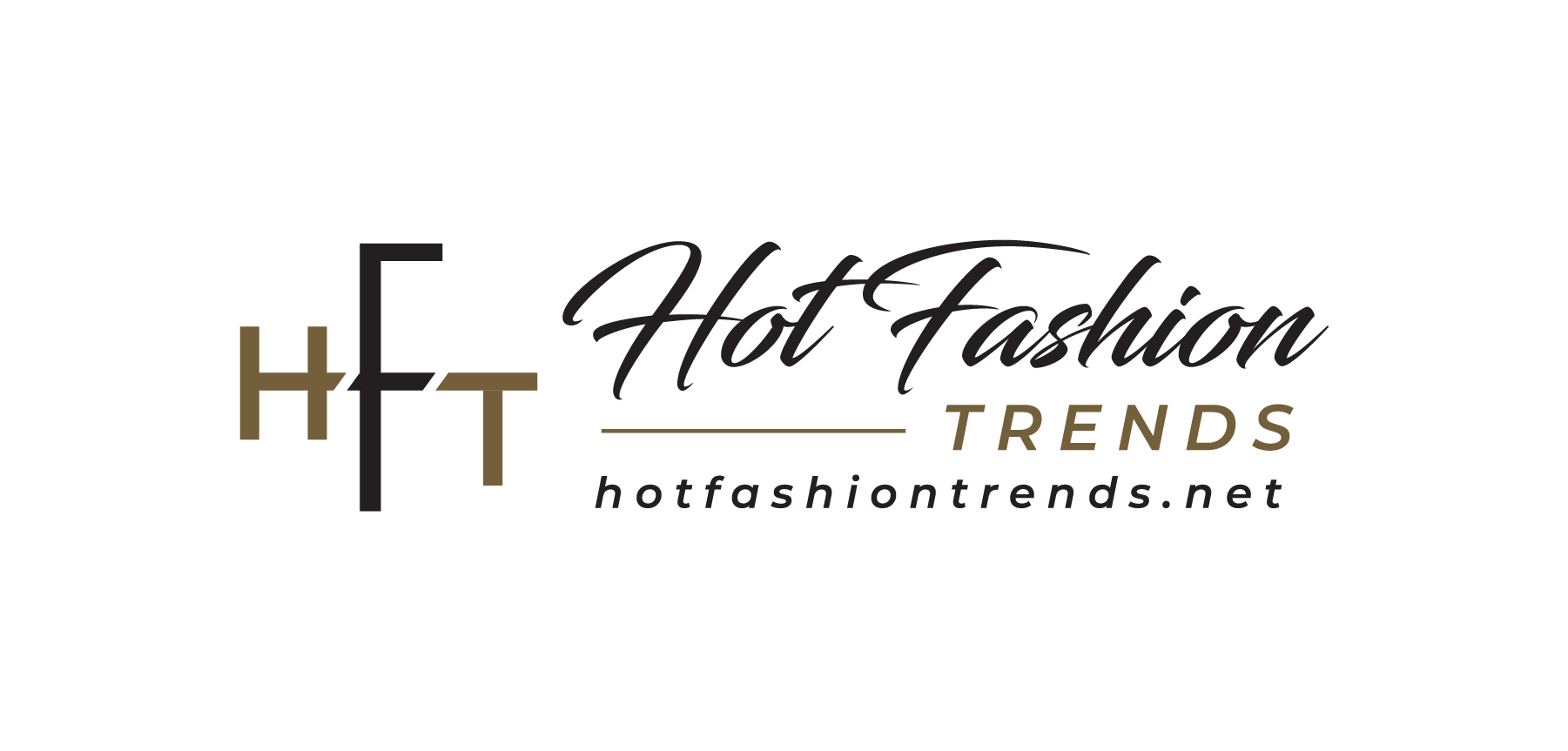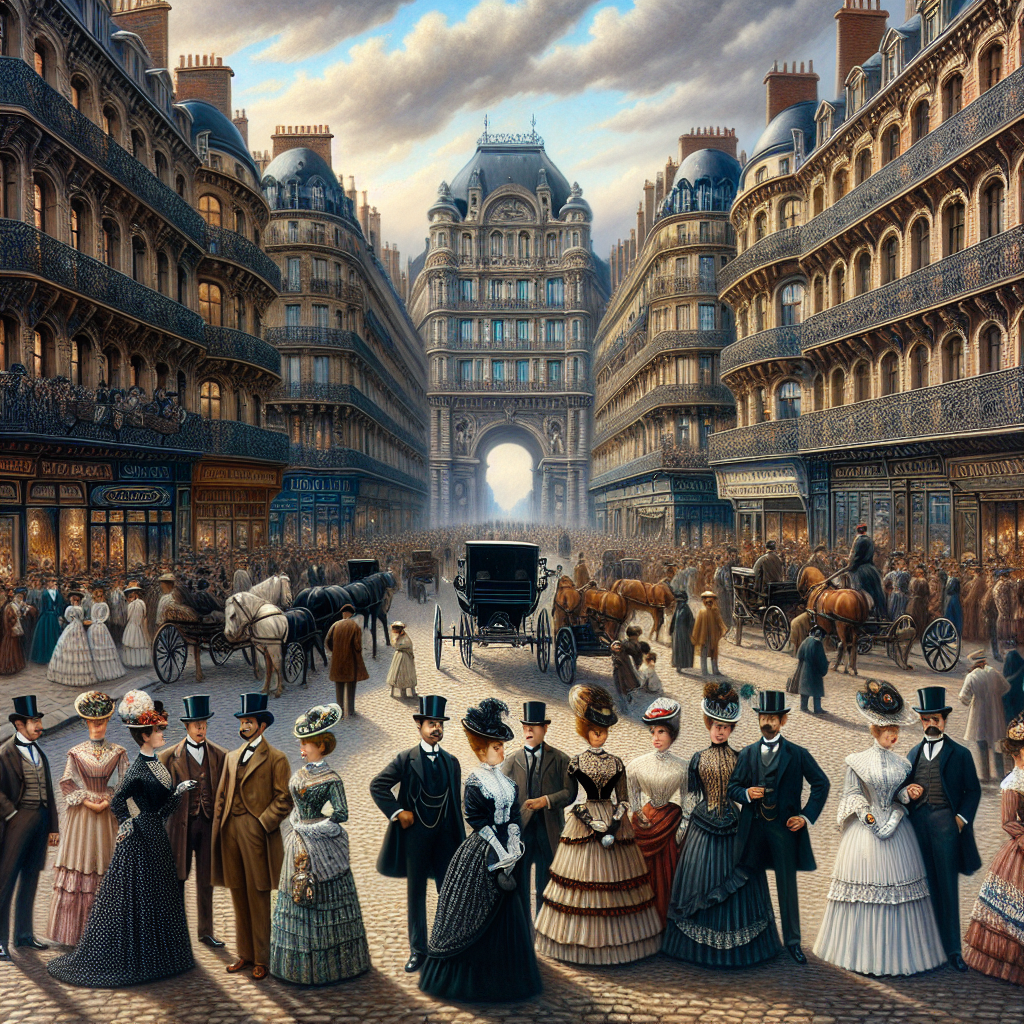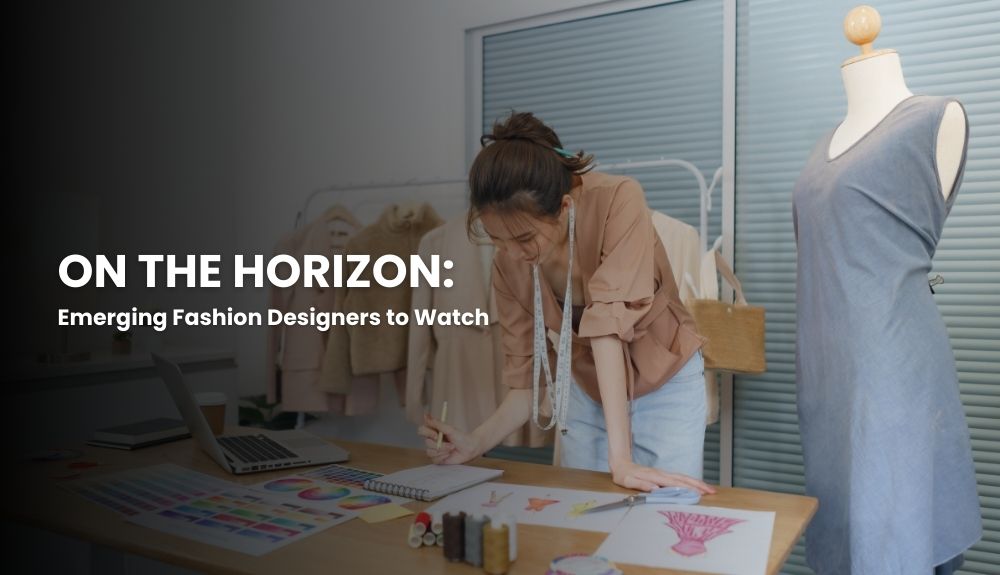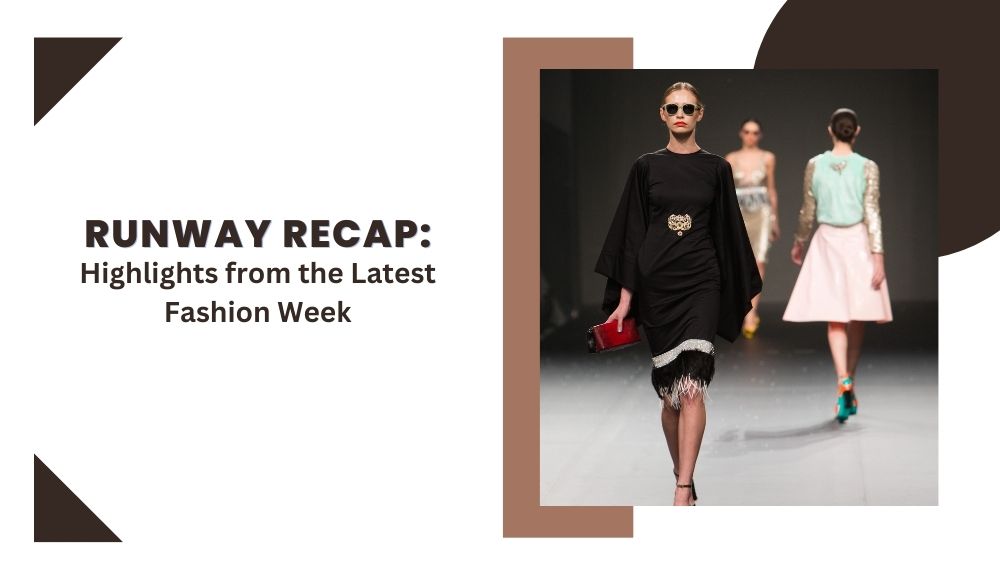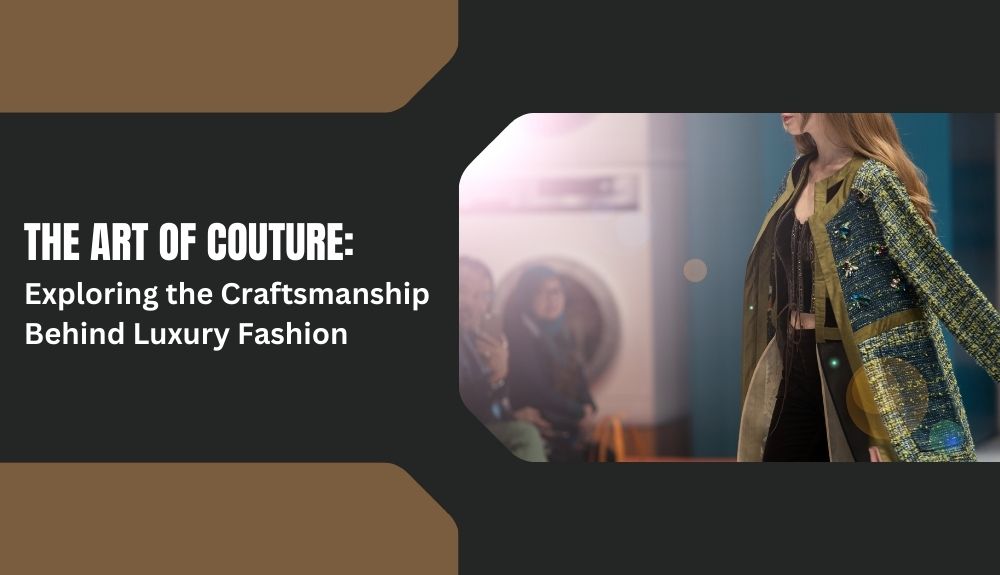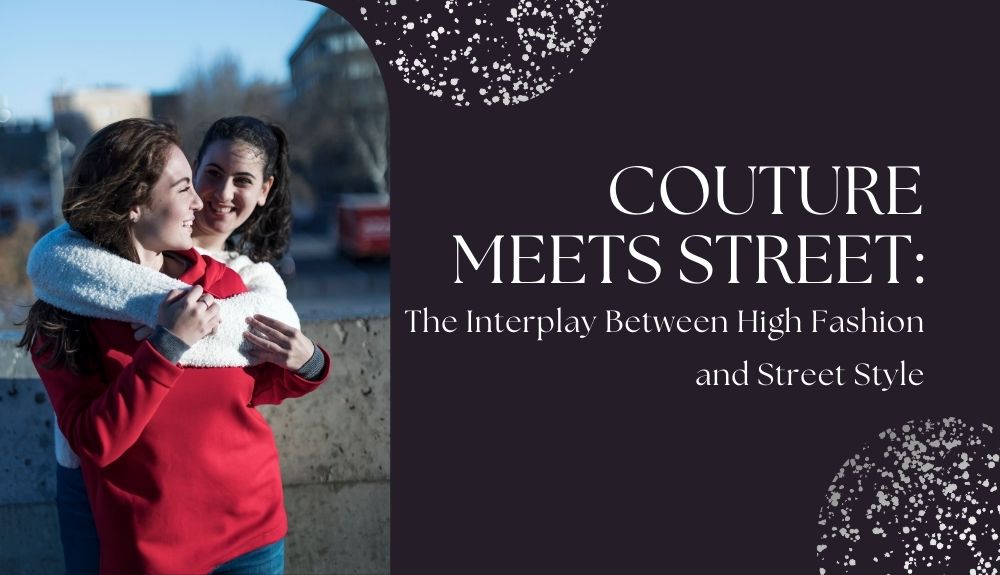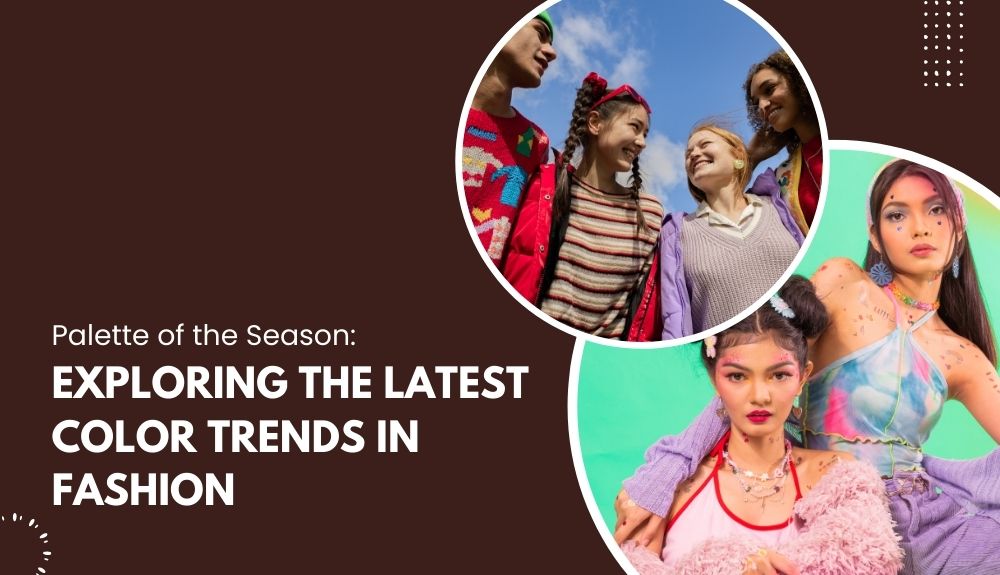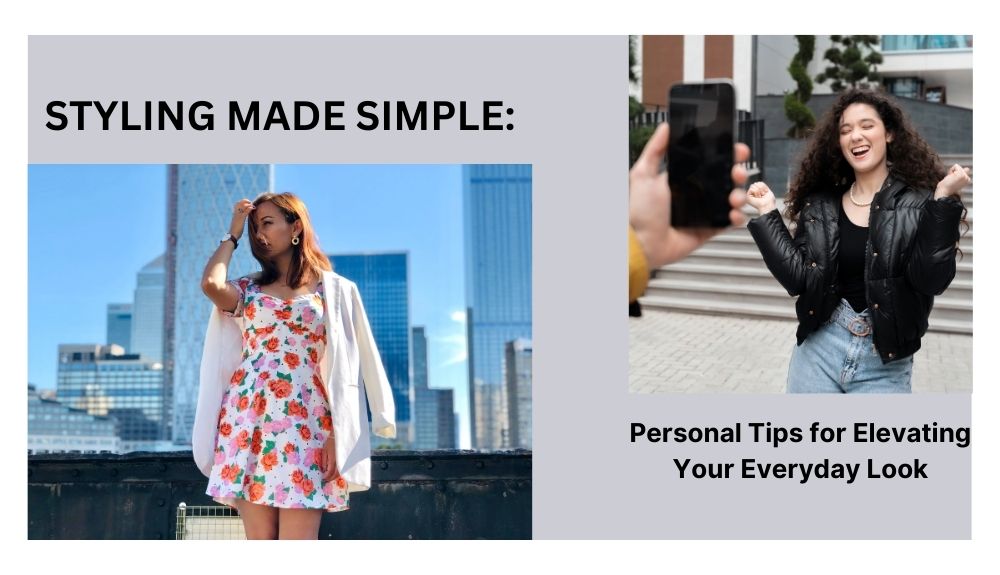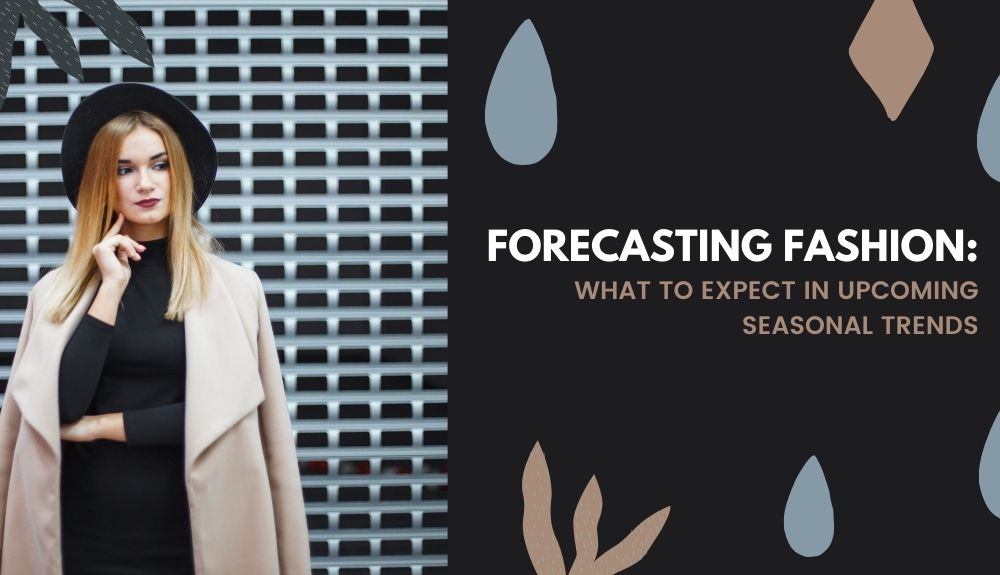How Brands Predict New Styles: Fashion Forecasting Techniques Explained
Have you ever wondered how fashion brands are always steps ahead when it comes to predicting new styles? How do they know what trends will dominate the runways and the streets before anyone else? The answer lies in the fascinating world of fashion forecasting techniques. These techniques allow brands to analyze current consumer behavior, social media trends, and various other factors to accurately predict the direction of future fashion trends.
In this blog, we will dive deep into the secrets of fashion forecasting and explore the strategies and tools used by brands to stay ahead in the ever-changing fashion industry. From analyzing street style to studying celebrity fashion choices, we will uncover the methods that brands employ to predict new styles and unlock the future of fashion.
Join us as we explore real-life case studies and success stories from the fashion industry. Learn how fashion trend forecasting has become an essential part of the product development process for fashion companies. Discover the top tools and techniques used by trend forecasters to identify the must-have trends for each upcoming fashion year.
Stay ahead of the fashion curve and gain valuable insights into the world of trend forecasting. Get ready to enhance your knowledge and take your fashion game to the next level!
Fashion Trend Forecasting
Understanding the future of fashion is crucial for brands looking to stay ahead in the competitive industry. Trend forecasting plays a vital role in predicting new styles and trends, allowing fashion brands to anticipate market demands and capitalize on emerging opportunities. In this section, we will explore the concept of fashion trend forecasting and its significance for brands.
Anticipating time-to-market speed is important
In the fast-paced fashion industry, being able to accurately predict trends and bring new styles to market quickly can make all the difference. Trend forecasting helps brands identify upcoming trends before they become mainstream, enabling them to develop and launch products at the right time. By analyzing consumer behavior, fashion trends, and market insights, brands can anticipate the time-to-market speed required to capture the attention of their target audience.
Identifying key trends in times of change
Fashion is constantly evolving, and being able to identify key trends during times of change is essential. Trend forecasting allows brands to stay updated with shifts in consumer preferences, societal influences, and cultural developments. By understanding these underlying factors, brands can adapt their strategies and product offerings to cater to changing consumer demands effectively.
Forecasting a distinct style within a market
In a highly saturated fashion market, it is crucial for brands to differentiate themselves by developing a distinct style. Trend forecasting helps brands identify unique design directions and aesthetic preferences that resonate with their target audience. By forecasting a distinct style, brands can create a cohesive brand identity and build a loyal customer base.
Fashion trend forecasting is a multifaceted and nuanced process that combines data analysis, consumer insights, and industry expertise. By leveraging these techniques, brands can unlock the future of fashion and position themselves as leaders in the industry.
The Evolution of Trend Forecasting
Forecasting a Distinct Style Within a Market
Trend forecasting has come a long way in the fashion industry, evolving to meet the demands of a fast-paced and ever-changing market. One key aspect of trend forecasting is the ability to predict and identify a distinct style within a particular market. This involves analyzing consumer behavior, studying fashion shows, monitoring social media trends, and conducting extensive research.
By understanding the preferences and desires of consumers, brands can forecast the next big trend and tailor their offerings accordingly. This process involves examining past trends, identifying patterns, and using that knowledge to predict what styles will resonate with consumers in the future.
Fashion brands today rely on a variety of tools and techniques to forecast a distinct style within a market. They leverage data from various sources, such as social media monitoring, market research, and street style studies. By analyzing this data, brands can gain insights into consumer preferences, upcoming fashion trends, and even forecast the direction of the fashion industry.
Furthermore, brands collaborate with trend forecasting services like Heuritech to leverage their advanced algorithms and image recognition technology. This allows them to analyze historical data, spot emerging trends, and make informed decisions about product development and marketing strategies.
Ultimately, the ability to predict a distinct style within a market is crucial for fashion brands. It helps them stay ahead of the competition, meet the evolving demands of consumers, and ensure the success of their products in a highly competitive industry.
Fashion Weeks and Their Role in Trend Prediction
Fashion weeks play a crucial role in trend prediction and are highly anticipated events in the fashion industry. They set the stage for designers to showcase their latest collections and provide valuable insights into upcoming trends. Here’s how fashion weeks contribute to trend forecasting:
– Platform for Innovation: Fashion weeks act as a platform for designers to showcase their creative vision and experiment with new styles and ideas. These collections often set the tone for future trends, inspiring other designers, brands, and consumers.
– Spotlight on Runway Shows: Runway shows during fashion weeks highlight the latest garments, accessories, and styling techniques. Fashion experts and trend forecasters closely analyze these shows to identify emerging patterns, color palettes, silhouettes, and materials.
– Street Style Influence: Fashion weeks attract influencers, celebrities, and industry insiders who set trends through their personal style choices. Street style captured during these events serves as a valuable source of inspiration and trend spotting for fashion forecasters.
– Industry Networking: Fashion weeks bring together professionals from various sectors, including designers, buyers, stylists, and journalists. These networking opportunities facilitate trend discussions, collaborations, and the exchange of ideas, further contributing to trend prediction.
– Media Coverage: Fashion weeks receive extensive media coverage, providing widespread exposure to the latest trends and collections. Fashion journalists and bloggers report on the shows, creating buzz and amplifying the reach of trend information.
Fashion weeks not only provide a preview of future styles but also serve as a hub for trend analysis, inspiration, and networking. Their influence extends beyond the runway, shaping the direction of the fashion industry for seasons to come.
The Relationship Between Fashion Trends and Social Media
In today’s digital age, social media platforms have become powerful tools for fashion trend forecasting. The connection between fashion trends and social media is undeniable, as these platforms provide a real-time look into the latest styles and influences. Here are some key ways in which social media impacts fashion trends:
1. Social Influencers: Fashion influencers on platforms like Instagram and TikTok have a significant impact on shaping trends. Their curated content and personal style inspire millions of followers, who then emulate their fashion choices.
2. Street Style: Social media platforms allow users to share their street style looks, providing valuable insights into trends happening in real life. Street style photos capture authentic fashion moments, showcasing how everyday individuals interpret and wear trends.
3. Runway Coverage: Fashion brands and media outlets often share runway show highlights on social media platforms, enabling fashion enthusiasts to access and engage with upcoming trends. This accessibility has bridged the gap between high fashion and everyday consumers.
4. Consumer Engagement: On social media, fashion brands have the opportunity to engage directly with their audience, gathering feedback and insights on their products. This two-way communication allows brands to understand consumer preferences and tailor their offerings accordingly.
5. Data Analytics: Social media platforms provide valuable data analytics tools, allowing fashion brands to track engagement metrics, sentiment analysis, and consumer behavior patterns. This data-driven approach helps brands identify emerging trends and make informed business decisions.
The relationship between fashion trends and social media is symbiotic, with each influencing and informing the other. As social media continues to evolve, it will undoubtedly play an integral role in shaping the future of fashion trends.
Forecasting Trends with Heuritech
Are foreign markets important?
When it comes to fashion forecasting, understanding the importance of foreign markets is crucial for brands to stay ahead in the industry. Globalization has transformed the fashion landscape, making it essential for brands to consider international trends and consumer preferences.
Foreign markets provide valuable insights and opportunities for fashion brands. By analyzing trends from different regions, brands can tap into new markets and cater to diverse consumer expectations. Moreover, international collaborations and partnerships can enhance a brand’s credibility and expand its reach.
Heuritech, a leading trend forecasting company, recognizes the significance of foreign markets in fashion forecasting. Their data-driven approach includes collecting and analyzing information from various markets around the world. By leveraging technology and advanced algorithms, Heuritech provides brands with actionable insights into international trends, enabling them to make informed decisions and align their strategies with global fashion movements.
Understanding foreign markets not only helps brands identify emerging trends but also allows them to adapt their products and marketing strategies to cater to specific cultural preferences. By embracing the diverse nature of fashion, brands can position themselves at the forefront of the industry and capture the attention of a global audience.
How Does Heuritech’s Trend Forecasting Technology Work?
Heuritech’s trend forecasting technology leverages advanced algorithms and cutting-edge image recognition technology to analyze and predict future fashion trends. Here’s a breakdown of how the process works:
Defining audience panels on social media
To gather relevant data for trend analysis, Heuritech first defines audience panels by selecting key influencers, celebrities, and fashion enthusiasts on social media platforms. These panels are carefully curated to represent a diverse range of demographics and tastes within the fashion industry.
Applying Heuritech’s image recognition technology to shared images on social media
Next, Heuritech’s image recognition technology comes into play. It automatically scans and analyzes millions of images shared on social media platforms, such as Instagram and Pinterest, to identify emerging fashion trends and styles. The technology can identify specific garments, patterns, colors, and even accessories, providing valuable insights into consumer preferences and behaviors.
Engaging Heuritech’s machine learning algorithms
Heuritech’s machine learning algorithms are constantly learning and adapting to evolving fashion trends. They analyze the vast amount of data collected, detect patterns, and identify correlations between different trends. This helps to uncover emerging styles, popular color palettes, and innovative design elements.
Entering the data into Heuritech’s Market Insights platform
Finally, the analyzed data is entered into Heuritech’s Market Insights platform, where it is transformed into actionable insights for fashion brands. It provides detailed trend reports, trend direction predictions, and trend performance analyses. Brands can use these insights to inform their product development process, align their collections with the latest trends, and gain a competitive edge in the fast-paced fashion industry.
Heuritech’s trend forecasting technology combines data-driven analysis with advanced machine learning techniques, enabling fashion brands to make data-backed decisions and stay ahead in the ever-changing world of fashion.
Unlocking the Future of Fashion: Trend Forecasting Insights
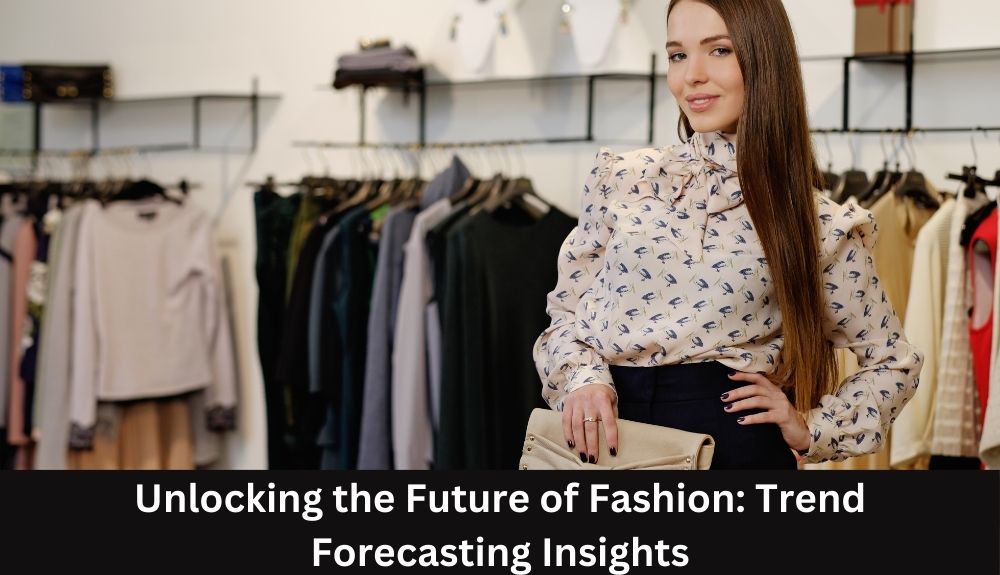
Trend forecasting plays a critical role in the fast-paced world of fashion. It enables brands to stay ahead by predicting new styles and understanding consumer preferences. By leveraging a combination of experience, expertise, and data-driven insights, fashion companies can unlock the future of fashion. Let’s explore some key insights into trend forecasting.
Observation
Observation is the foundation of trend forecasting. Fashion trend forecasters keenly observe the world around them, paying attention to various sources such as fashion shows, magazines, street style, and even social media posts. This allows them to spot emerging patterns and develop a deep understanding of consumer behavior.
Studying Magazines and Fashion Shows
Fashion magazines and runway shows are treasure troves of inspiration for trend forecasters. They carefully study the latest collections and analyze the designs, colors, and silhouettes that resonate with consumers. By immersing themselves in the world of fashion, trend forecasters can identify upcoming trends and translate them into actionable insights for fashion brands.
Observing Street Style
Street style has become a powerful source of inspiration in trend forecasting. Fashion enthusiasts express their personal style through their everyday outfits, providing valuable insights into the latest fashion trends. Trend forecasters observe street style and identify recurring elements, helping brands understand how trends are evolving in real-life settings.
Observing Fashion Weeks
Fashion Weeks held in major fashion capitals like New York, Paris, and Milan are instrumental in trend forecasting. These events showcase the latest collections of world-renowned designers and set the tone for upcoming trends. By closely monitoring the runway shows, trend forecasters can identify key themes, colors, and styles that will shape the future of fashion.
Analyzing Color Palettes
Color plays a crucial role in fashion trends. Trend forecasters analyze color palettes from various sources, including runway shows, interior design, and cultural influences. By understanding the psychology of color and its impact on consumer preferences, forecasters can guide brands in choosing the right hues for their collections.
Trend forecasting is a fascinating blend of art, intuition, and data analysis. By embracing these insights, fashion brands can tap into the ever-evolving world of fashion and unlock the future of their industry. Stay tuned for more trend forecasting techniques and actionable tips to help your brand thrive in the competitive fashion landscape.
Skills Required to Excel as a Fashion Trend Forecaster
As a fashion trend forecaster, possessing certain skills is crucial to remain ahead in the competitive industry. Here are the key skills required to excel in this field:
Knowledge of Fashion Trends
Having a deep understanding of current and emerging fashion trends is essential. Trend forecasters must stay updated on the latest styles, designs, and consumer preferences.
Analytical Abilities
Strong analytical skills are necessary to interpret data and identify patterns. Trend forecasters need to analyze consumer behavior, market trends, and historical data to predict future fashion trends accurately.
Creative Thinking
Incorporating creativity into trend forecasting is vital. Trend forecasters should think outside the box and offer unique perspectives on fashion trends. They need to identify innovative ideas and translate them into actionable insights.
Research Skills
Thorough research is a fundamental aspect of trend forecasting. Trend forecasters must be skilled in conducting extensive research, gathering data from various sources, and analyzing industry reports.
Attention to Detail
Having a keen eye for detail is essential in trend forecasting. Trend forecasters need to observe subtle shifts in consumer preferences, color palettes, fabric textures, and other elements that influence fashion trends.
Communication Skills
Effective communication is crucial for trend forecasters to convey their insights to clients, fashion designers, and other stakeholders. They should be able to articulate their ideas clearly and concisely.
Market Knowledge
A comprehensive understanding of the fashion industry and its dynamics is vital. Trend forecasters should be familiar with fashion history, the workings of the market, and the strategies of different fashion brands.
Adaptability
The fashion industry is ever-changing, with trends evolving rapidly. Trend forecasters must be adaptable, flexible, and open to embracing new ideas and approaches to stay relevant in the fast-paced fashion world.
By developing and honing these skills, fashion trend forecasters can excel in their roles and provide valuable insights to the fashion industry.
How to Become a Fashion Trend Forecaster
Becoming a fashion trend forecaster requires a combination of skills, knowledge, and experience in the fashion industry. Here’s a step-by-step guide on how you can pursue a career in trend forecasting:
1. Develop a Passion for Fashion: Cultivate a genuine interest in fashion trends, styles, and consumer behavior. Stay updated on the latest fashion news and follow fashion influencers and brands for inspiration.
2. Obtain a Relevant Education: Pursue a degree in fashion design, merchandising, marketing, or a related field. Consider enrolling in specialized fashion trend forecasting courses or attending workshops and seminars to gain deeper insights into the field.
3. Gain Industry Experience: Seek internships or entry-level positions with fashion companies, trend forecasting agencies, or fashion publications. This hands-on experience will provide valuable exposure to the industry and help you understand the dynamics of fashion trends.
4. Develop Analytical Skills: Sharpen your analytical abilities by conducting in-depth research on consumer behavior, market trends, and cultural influences. Use data analysis tools and techniques to identify patterns and make accurate trend predictions.
5. Build a Strong Network: Connect with professionals in the fashion industry, including fashion designers, buyers, stylists, and other trend forecasters. Attend industry events, join fashion associations, and engage in online forums to expand your network.
6. Stay Abreast of Technology: Embrace technology-driven tools and platforms that aid in trend forecasting, such as data analytics tools, social media monitoring systems, and machine learning algorithms. Familiarize yourself with image recognition technology and other advanced tools used in the industry.
7. Continuously Learn and Adapt: The fashion industry is ever-evolving, and staying ahead requires ongoing learning and adapting to new trends and technologies. Attend fashion conferences, workshops, and seminars to enhance your knowledge and stay updated on industry developments.
Remember, becoming a fashion trend forecaster requires a combination of creativity, analytical skills, and a deep understanding of consumer behavior. By following these steps and continuously honing your skills, you can pave the way for a successful career in fashion trend forecasting.
Fashion Forecasting: How Brands Predict New Styles and Why it is Imperative for Your Brand?
Fashion forecasting plays a crucial role in the ever-evolving world of fashion. Brands rely on trend analysis and predictions to anticipate upcoming styles and stay ahead in the competitive industry. Understanding the significance of fashion forecasting is imperative for any brand looking to succeed.
Leveraging In-House Trend Forecasters
Many brands have their own in-house trend forecasters who continuously monitor fashion trends. These experts analyze consumer behavior, historical data, and social media trends to identify emerging patterns and predict future fashion directions. By leveraging the knowledge and expertise of these forecasters, brands can gain valuable insights into evolving consumer preferences.
Hiring a Fashion Forecasting Agency
Some brands enlist the help of external fashion forecasting agencies. These agencies specialize in trend analysis and have access to extensive research and data. By collaborating with such agencies, brands can benefit from their industry expertise and receive comprehensive trend reports tailored to their specific needs.
Garnering Insights from Renowned Fashion Shows
Attending major fashion shows, such as those in New York, Paris, and Milan, is another way brands anticipate upcoming fashion trends. These shows feature the latest collections from world-renowned designers and provide a valuable opportunity to observe and analyze emerging styles. By keeping a close eye on the runway, brands can gain inspiration and incorporate the latest trends into their future collections.
Analyzing Fashion Influencers
In today’s digital age, fashion influencers have a significant impact on trends. Brands monitor influential fashion bloggers and social media influencers to identify emerging styles and consumer preferences. By analyzing their posts and observing their fashion choices, brands can forecast new styles that resonate with their target audience.
Viewing Other Industries’ Data
Fashion forecasting doesn’t solely rely on the fashion industry itself. Brands also look at other industries for inspiration and trends. For example, analyzing beauty products and trends can provide insights into color palettes, patterns, and overall aesthetics that can translate into the fashion industry.
Fashion forecasting is crucial for brands to stay relevant and meet consumer demands. By leveraging in-house experts, collaborating with forecasting agencies, tracking influential fashion shows, analyzing fashion influencers, and looking beyond the industry, brands can predict new styles and maintain a competitive edge in the dynamic world of fashion.
What is Fashion Forecasting?
Fashion forecasting is the process of predicting future fashion trends and styles. It involves analyzing various factors, such as consumer behavior, social media trends, and the direction of the fashion industry, to anticipate upcoming fashion trends accurately. Fashion brands and companies rely on trend forecasting to stay ahead in the competitive industry and to guide their product development.
Leveraging in-house trend forecasters
Fashion brands often have their in-house trend forecasters who closely monitor the fashion industry, analyze data, and predict future trends. These professionals use their expertise and industry knowledge to identify emerging styles and consumer preferences. They play a crucial role in shaping the direction of the brand’s collections and overall image.
Hiring a Fashion Forecasting agency
Some brands choose to collaborate with fashion forecasting agencies and consultancies. These specialized firms provide valuable insights, trend reports, and analysis to help brands make informed decisions. They have access to extensive research and utilize various tools, such as social media monitoring, market research, and historical data analysis, to generate accurate forecasts.
Garnering insights from renowned fashion shows
Fashion shows, especially those held in major fashion capitals like New York, provide valuable information about upcoming trends. Brands closely observe the designs, color palettes, and materials used on the runway to identify the direction of future fashion trends. These events serve as a source of inspiration and help brands align their collections with the latest styles.
By analyzing fashion influencers
Fashion influencers on social media platforms like Instagram and YouTube have a significant impact on consumer preferences. Brands monitor the content shared by these influencers to gain insights into emerging styles and trends. Analyzing the posts, outfits, and collaborations of fashion influencers provides valuable information for forecasting future trends.
By viewing other industries’ data
Fashion brands can also gain insights from other industries when it comes to predicting fashion trends. For example, observing trends in the beauty industry and studying the popularity of specific beauty products can indicate directions for future fashion trends. Analyzing the product development process in industries beyond fashion can provide valuable inspiration and ideas.
Overall, fashion forecasting involves a combination of data analysis, market research, and industry expertise to accurately predict future trends. Brands that effectively leverage fashion forecasting techniques can stay ahead of the curve and meet consumer demands in a rapidly evolving industry.
What is a Long-Term Trend Forecasting?
Long-term trend forecasting plays a crucial role in the fashion industry, allowing brands to anticipate and adapt to future shifts in consumer behavior and preferences. This type of forecasting involves predicting trends that will prevail over an extended period, often spanning multiple seasons or even years.
Analyzing Consumer Behavior and Macro Influences
To forecast long-term trends, fashion brands delve into extensive research, analyzing consumer behavior, societal changes, and macro influences. They examine various factors such as cultural shifts, economic indicators, and political developments, to gain insights into the evolving consumer mindset and their changing needs.
Examining Historical Data and Trends
In addition, brands look at historical data and trends to identify patterns and identify emerging styles or themes that have the potential to become long-term trends. Through careful analysis, fashion forecasters can decipher the underlying motivations and desires that drive these trends, enabling brands to align their offerings accordingly.
Collaborating with Trend Forecasting Agencies
Many fashion brands also collaborate with trend forecasting agencies that specialize in long-term trend predictions. These agencies have access to a wealth of market research, consumer insights, and industry expertise, which they leverage to provide brands with valuable guidance and strategic advice.
By embracing long-term trend forecasting and actively incorporating it into their product development process, fashion brands can position themselves as forward-thinking industry leaders, staying ahead of the curve and meeting the evolving needs of their consumers.
Kindly remove all the comments, instructions, headers, and word count information from the output. The final output should only consist of the content of the section along with the H2 and H3 headers.
What is a Short-Term Trend Forecasting?
Short-term trend forecasting in the fashion industry focuses on predicting upcoming trends and styles for the immediate future. It typically covers a span of six months to a year. This type of forecasting helps brands stay up-to-date with consumer preferences and adapt their designs accordingly.
Identifying Emerging Trends
One key aspect of short-term trend forecasting is identifying emerging trends. Fashion brands closely monitor fashion shows, street style, and social media to spot the latest styles gaining popularity. They analyze the designs, color palettes, and silhouettes showcased on the runways and incorporate them into their own collections.
Reacting to Consumer Behavior
Short-term trend forecasting also involves observing consumer behavior to understand the current demands and preferences. By monitoring social media posts, fashion brands gain insights into what styles and products are resonating with their target audience. This information allows them to react quickly and produce relevant and desirable designs.
Utilizing Technology
Technology plays a crucial role in short-term trend forecasting. Fashion brands leverage tools like image recognition technology to analyze and identify trends from vast amounts of visual data. They also use machine learning algorithms to extract valuable insights and predict which trends will gain traction in the near future.
By staying on top of short-term trend forecasting, fashion brands can ensure they remain competitive in the ever-evolving industry and meet the demands of their fashion-forward customers.
What an Experienced Forecaster Does
Experienced fashion trend forecasters play a crucial role in predicting the future of fashion. With their expertise and knowledge, they analyze numerous factors to identify emerging trends and anticipate consumer preferences. Here are some key tasks performed by an experienced forecaster:
Leveraging in-house trend forecasters
Fashion brands often employ in-house trend forecasters who closely monitor industry developments and conduct extensive research. These experts study market trends, analyze consumer behavior, and predict future directions in fashion.
Hiring a Fashion Forecasting agency
Some brands prefer to rely on external fashion forecasting agencies. These agencies have access to vast resources and utilize advanced tools to analyze market data, track social media trends, and provide valuable insights to their clients.
Garnering insights from renowned fashion shows
Experienced forecasters attend fashion weeks and closely observe the presentations of world-renowned designers. By analyzing the styles, colors, and silhouettes showcased on the runway, they gain valuable insights into upcoming fashion trends.
By analyzing fashion influencers
Fashion influencers, such as bloggers and celebrities, have a significant impact on consumer preferences. Experienced forecasters closely follow their social media posts, red carpet looks, and street style, extracting valuable information about emerging trends.
By viewing other industries’ data
Fashion forecasters also analyze trends and innovations from other industries, such as technology, art, and architecture. They carefully observe how these developments influence consumer behavior and adapt them to the fashion industry.
By incorporating these strategies, experienced fashion trend forecasters anticipate shifts in consumer preferences, effectively guiding brands in creating successful collections that resonate with their target audience.
How Brands Forecast Fashion Trends
Forecasting fashion trends is not limited to studying the fashion industry alone. Brands also look to other industries for valuable insights when predicting new styles. By analyzing data and trends from various sectors, fashion brands gain a broader perspective and enhance their forecasting accuracy. Here’s how they leverage data from other industries:
1. Technology: Fashion brands monitor the latest technological advancements and innovations across sectors. They identify how these advancements influence consumer behavior and incorporate them into their trend forecasting strategies.
2. Art and Design: The art and design world often serves as a rich source of inspiration for fashion brands. They explore various art movements, color palettes, and design concepts to identify emerging trends that can influence future fashion styles.
3. Pop Culture: Brands keep a close eye on popular culture, including music, movies, and television shows. They analyze the influence of celebrities and influencers on fashion trends, tapping into the zeitgeist and incorporating it into their forecasting process.
4. Global Events: Major events, such as sports tournaments, cultural festivals, and political movements, can shape fashion trends. Brands analyze these events and their impact on consumer preferences to anticipate future trends and tailor their offerings accordingly.
5. Travel and Tourism: Brands study travel destinations and tourist hotspots to identify emerging fashion trends. They explore the unique styles and designs specific to various regions and incorporate them into their trend forecasts.
By incorporating data and trends from other industries, fashion brands expand their understanding of consumer preferences and anticipate the future direction of fashion. This comprehensive approach to trend forecasting enables them to stay ahead of the competition and deliver innovative and sought-after styles.
Remember, trend forecasting is a dynamic process that requires continuous monitoring and adaptation to stay relevant in the ever-changing fashion landscape.
Techniques Leveraged for Fashion Forecasting
Fashion forecasting is a complex process that involves analyzing various factors and leveraging different techniques to predict future trends. Here are some key techniques used by fashion brands in their forecasting efforts:
Leveraging In-House Trend Forecasters
Many fashion brands have in-house trend forecasters who closely monitor fashion shows, street style, and social media to identify emerging trends. These experts rely on their industry experience and fashion intuition to make informed predictions about future styles.
Hiring a Fashion Forecasting Agency
Some brands choose to outsource their trend forecasting to specialized agencies. These agencies have access to extensive research and data, allowing them to provide comprehensive trend reports and insights to their clients.
Garnering Insights from Renowned Fashion Shows
Fashion shows, particularly those held in major fashion capitals like New York and Paris, serve as important sources of inspiration for trend forecasters. They carefully observe the latest collections, identifying recurring themes, silhouettes, colors, and patterns that may shape future trends.
Analyzing Fashion Influencers
Fashion influencers play a significant role in shaping consumer behavior and trends. Brands analyze the content and aesthetics of these influencers to understand what resonates with their audience and incorporate these elements into their collections.
Viewing Other Industries’ Data
Fashion brands often look beyond their own industry for trend inspiration. They analyze data from industries such as architecture, art, and technology to uncover innovative ideas and translate them into fashion-forward designs.
By leveraging these techniques, fashion brands can stay ahead in the competitive industry and accurately predict new styles and trends.
Actionable Tips for Your Brand Forecasting

Forecasting fashion trends is crucial for brands to stay ahead in the competitive industry. By accurately predicting and aligning with the latest trends, brands can create products and marketing strategies that resonate with their target audience. Here are some actionable tips for your brand forecasting:
Analyze from where your customers are getting inspired
Understanding the sources of inspiration for your target customers is essential in trend forecasting. Analyze their preferences, follow their social media posts, and observe the influencers they follow. This will give you valuable insights into the styles and trends that appeal to them.
Examine your Customers’ Psychographics
Psychographics study the attitudes, beliefs, and values of your customers. Analyzing psychographic data can help you understand their motivations and preferences. This knowledge can guide your forecasting decisions and tailor your products and messaging to their specific desires.
Be Reactive
In the fast-paced fashion industry, it’s crucial to be reactive to emerging trends. Stay updated on the latest fashion shows, street style, and social media discussions. By being responsive and adapting quickly, you can capitalize on new trends and maintain your brand’s relevance.
Focus on the Conversion
While forecasting trends is important, it’s equally crucial to focus on the conversion of these trends into sales. Analyze the demand for specific trends and prioritize the ones that have the potential to drive sales and resonate with your target audience.
Leverage Visual Consumption
In today’s digital age, visual content has a strong impact on consumers. Leverage the power of visually appealing imagery and videos in your marketing campaigns. Use platforms like Instagram and Pinterest to showcase your products and inspire your audience.
Leverage the power of technology
Utilize advanced technology tools and software to enhance your brand forecasting capabilities. From image recognition technology to comprehensive data analysis platforms, there are numerous tools available to gather insights and make informed decisions.
Monitor the Collective Voice
Stay informed about industry discussions, fashion blogs, and social media conversations. Monitor what people are saying about fashion trends, brands, and influencers. This collective voice can provide valuable insights into emerging trends and consumer preferences.
Here’s What Else to Consider
Trend Analysis
Trend analysis plays a crucial role in fashion forecasting, allowing brands to anticipate and predict future fashion trends. By analyzing consumer behavior, market research, and fashion industry trends, brands gain valuable insights into the direction of the fashion industry. This analysis involves studying various sources such as social media posts, fashion shows, and street style. It helps brands understand emerging styles, preferences, and shifts in consumer demand. Trend analysis is an essential step in the product development process, enabling fashion companies to create collections that resonate with their target audience and stay ahead of the competition.
Trend Spotting
Trend spotting is a crucial aspect of fashion forecasting that involves identifying emerging styles and predicting their future popularity. It requires keen observation skills and a deep understanding of consumer behavior. By studying various sources like social media, fashion shows, and street style, trend spotters can uncover the next big trends in the fashion industry.
Here are a few tips for effective trend spotting:
1. Stay updated: Keep a close eye on fashion influencers’ blogs, social media posts, and the latest fashion news to stay ahead of the curve.
2. Analyze consumer behavior: Pay attention to what consumers are wearing and sharing on social media. This can reveal valuable insights into their preferences and help identify upcoming trends.
3. Study fashion shows: Attend or closely follow renowned fashion shows to spot emerging trends showcased by world-renowned designers.
4. Explore street style: Street style is a great source of inspiration and can provide a glimpse into the fashion trends that people are adopting organically.
Remember, trend spotting is a continuous process, and the ability to anticipate upcoming fashion trends is imperative for staying relevant in this competitive industry.
Trend Forecasting
Trend forecasting is a critical component of the fashion industry, enabling brands to predict future styles and stay ahead in the competitive market. By analyzing consumer behavior, social media trends, and industry insights, fashion companies can anticipate the direction of fashion trends and align their product development accordingly.
Leveraging In-House Trend Forecasters
One approach to trend forecasting is to employ in-house trend forecasters who possess a deep understanding of consumer preferences and market dynamics. These experts conduct extensive research, monitor fashion shows, and analyze data from various sources to identify emerging trends. They provide valuable insights that guide the design and development of new products.
Hiring a Fashion Forecasting Agency
Some brands choose to enlist the services of fashion forecasting agencies. These agencies specialize in trend analysis and have access to vast databases of historical trend data. By leveraging their expertise and resources, brands can gain valuable insights into future trends and make informed decisions about their product offerings.
Garnering Insights from Renowned Fashion Shows
Renowned fashion shows, such as the ones held in New York, provide a platform for designers to showcase their latest collections. By closely observing these runway events, brands can identify emerging styles, colors, and patterns that are likely to become trends in the upcoming fashion year. Attending these shows and analyzing the designs is essential for staying ahead of the curve.
Analyzing Fashion Influencers
Fashion influencers play a crucial role in shaping consumer preferences. By monitoring the content they share on social media platforms, brands can gain insights into the trends that resonate with their target audience. Collaborating with influential individuals and incorporating their style choices into product development strategies can help brands establish a strong market presence.
Viewing Other Industries’ Data
Trends often emerge across multiple industries, not just fashion. Analyzing data from sectors like beauty, technology, and interior design can provide valuable insights into broader consumer preferences and highlight potential cross-industry trends.
Incorporating these trend forecasting techniques into their strategies enables brands to unlock the future of fashion, anticipate market demands, and align their product offerings with consumer preferences. By staying ahead of the curve, fashion companies can thrive in an ever-changing industry.
Trend Testing
Trend testing is a crucial step in the fashion forecasting process. It involves evaluating and validating the predicted trends to ensure their relevance and potential success in the market. This process helps fashion brands make informed decisions about which trends to pursue and invest in.
Here are some key aspects of trend testing:
1. Consumer Feedback
Fashion brands conduct surveys, focus groups, and interviews with target consumers to gather feedback on the predicted trends. This feedback provides insights into consumer preferences, opinions, and potential interest in the identified trends.
2. Retailer Collaboration
Collaborating with retailers is essential to evaluate the feasibility and commercial viability of the forecasted trends. Fashion brands work closely with retailers to understand their perspectives, analyze sales data, and gauge the interest of consumers at the point of sale.
3. Prototyping and Sampling
Creating prototypes and samples allows fashion brands to visualize and physically test the forecasted trends. This process helps identify any practical challenges, refine designs, and assess the overall appeal and fit of the proposed trends.
4. Runway Presentations
Fashion brands showcase their collections on runways to gauge the response of industry professionals, media, and influencers. The feedback received during runway shows provides valuable insights into the acceptance and potential success of the forecasted trends.
5. Market Testing
Market testing involves introducing limited quantities of products featuring the forecasted trends to assess consumer demand and acceptance. This allows brands to evaluate initial sales and gather real-time data on consumer response before making large-scale production decisions.
By rigorously testing trends, fashion brands can confidently determine which trends have the potential to resonate with consumers and drive sales. This ensures that brands stay ahead in the competitive fashion industry.
Trend Monitoring
Trend monitoring is a crucial aspect of fashion forecasting that allows brands to stay on top of evolving styles and consumer preferences. By closely observing and analyzing fashion trends, companies can make informed decisions about their products, marketing strategies, and overall brand image.
One key method of trend monitoring is through social media analysis. Monitoring popular platforms like Instagram, Pinterest, and TikTok can provide valuable insights into emerging fashion trends. Organic user-generated content, influencer posts, and hashtags allow brands to gauge which styles are gaining traction among consumers.
Fashion brands also closely follow street style and attend fashion weeks to identify emerging trends. Monitoring street style allows brands to tap into the creativity and individuality of everyday fashion enthusiasts, while fashion weeks provide a glimpse into upcoming styles from renowned designers.
In addition to these methods, trend monitoring involves analyzing consumer behavior, conducting market research, and leveraging technology. By combining data from various sources and staying attuned to consumer preferences, fashion brands can proactively adapt their offerings to meet the ever-changing demands of the industry. Overall, trend monitoring is an ongoing process that helps fashion brands navigate the competitive landscape and unlock the future of fashion.
Trend Reporting
Trend reporting is a crucial aspect of fashion trend forecasting, providing valuable insights into the latest and upcoming fashion trends. It involves the documentation and analysis of emerging styles and preferences to help brands make informed decisions in their product development process. Here are some key points to understand about trend reporting:
Importance of Trend Reporting
Trend reporting plays a vital role in the fashion industry as it helps brands stay relevant and competitive. By staying updated on the latest trends, brands can create products that resonate with consumers and meet their evolving demands. It also allows them to anticipate market shifts and make strategic business decisions.
Data Collection and Analysis
Trend reporting requires extensive research and data collection. Fashion trend forecasters utilize various sources such as runway shows, street style, fashion magazines, and social media to gather information. They analyze this data to identify patterns, recurring motifs, and consumer preferences, which they then report to fashion brands.
Translating Trends into Action
Trend reporting goes beyond just identifying trends. It involves interpreting the data and translating it into actionable insights for fashion brands. Trend reports provide guidance on color palettes, fabric choices, silhouettes, and key elements to incorporate into future collections. Fashion brands can use this information to align their product offerings with the current market trends.
Trend reporting is a valuable tool that empowers fashion brands to stay ahead of the curve and deliver on-trend products that resonate with their target audience. By leveraging trend reports, brands can drive innovation and success in the dynamic fashion industry.
Here’s What Else to Consider
When it comes to fashion trend forecasting, there are several additional factors that brands need to consider. These factors can greatly impact the success of their predictions and the overall direction of their fashion lines. Here are some important considerations:
1. Market Research: Conducting extensive research on consumer behavior, market trends, and competitor analysis is crucial for accurate forecasting. Understanding the needs and preferences of your target audience will enable you to create products that resonate with them.
2. Social Media Monitoring: Keep a close eye on social media platforms to identify emerging trends and gather insights from influencers and fashion enthusiasts. Social media posts, particularly those from fashion influencers, can provide valuable cues about the direction of the fashion industry.
3. Street Style Study: Street fashion has become a significant source of inspiration for designers and trend forecasters. Analyzing street style trends can help you identify the next big thing and anticipate shifts in consumer preferences.
4. Runway Shows: Fashion weeks and runway shows are an excellent platform for spotting upcoming trends. By attending or closely following these events, you can stay updated on the latest designs, color palettes, and silhouettes that will dominate the fashion landscape.
5. Technological Advancements: Embrace the power of technology in trend forecasting. Tools like Heuritech’s image recognition technology and machine learning algorithms can analyze vast amounts of data from social media posts and provide valuable insights for your trend forecasting efforts.
Remember, trend forecasting is not an exact science, but by considering these factors and staying up-to-date with the latest industry developments, you can enhance your forecasting accuracy and stay ahead in the competitive fashion industry.
Are You Sure You Want to Delete Your Contribution?
Deleting a contribution is a serious decision that should not be taken lightly. Before proceeding, it’s crucial to consider the potential impact and consequences of deleting your contribution. Here are a few points to consider:
1. Loss of Visibility: By deleting your contribution, you remove it from public view, which means that others will no longer be able to benefit from your insights or engage with your content.
2. Impact on Others: Your contribution may have influenced and sparked discussions among readers and users. Deleting it can disrupt the flow of conversation and potentially invalidate the perspectives and opinions of other community members.
3. Reputation and Trust: Removing your contribution might raise questions about your commitment to the community and your willingness to stand by your words. It’s important to assess whether the reasons for deletion outweigh the potential damage to your credibility.
4. Contextual Considerations: Take into account the specific circumstances and reasons behind your initial contribution. Reflect on whether those factors still hold true or if there might be alternative solutions or approaches to address any concerns.
Before proceeding with the deletion, consider reaching out to others in the community or seeking help from a moderator to resolve any issues or concerns you may have. Deleting contributions should be a last resort, reserved for situations where the content is factually incorrect, contains harmful information, or violates community guidelines.
Remember, once a contribution is deleted, it cannot be undone. Take the time to carefully evaluate the consequences before making a final decision.
Forecasting Fashion Trends
Forecasting fashion trends is an essential practice for brands to stay ahead in the competitive industry. By anticipating upcoming styles, fashion companies can align their product development process, marketing strategies, and overall brand identity with the ever-changing preferences of consumers. In this section, we will explore the techniques and strategies used by fashion brands to predict new styles and trends.
Leveraging In-House Trend Forecasters
Many fashion brands employ in-house trend forecasters who are responsible for analyzing consumer behavior, conducting extensive research, and monitoring various sources such as social media, fashion shows, and street style. These experts closely observe emerging patterns and identify key elements that could shape future fashion trends. By having dedicated trend forecasters on their team, fashion brands can ensure they have a pulse on the latest industry developments and can create products that are aligned with forecasted trends.
Hiring a Fashion Forecasting Agency
Some fashion brands opt to outsource their trend forecasting needs to specialized agencies. These agencies have extensive experience in trend analysis and offer valuable insights into upcoming fashion directions based on consumer behavior, market research, and historical data. Collaborating with a fashion forecasting agency can provide brands with a fresh perspective and access to industry expertise that may not be available in-house.
Garnering Insights from Renowned Fashion Shows
Fashion weeks held in fashion capitals like New York, Paris, and Milan serve as major platforms for designers to showcase their collections. Fashion brands closely analyze these shows, as they often set the tone for upcoming trends. By observing the designs, color palettes, and silhouettes showcased on the runway, brands can get a glimpse of the future of fashion and incorporate these elements into their own collections.
By Analyzing Fashion Influencers
Fashion influencers play a significant role in shaping consumer preferences and trends. Their large following and strong online presence make them valuable sources of inspiration for fashion brands. By monitoring the content shared by fashion influencers on social media platforms, brands can identify emerging styles, popular brands, and fashion-forward looks that are resonating with consumers. This information can guide brand strategies and help brands create products that align with the latest trends.
By Viewing Other Industries’ Data
A successful trend forecaster looks beyond the fashion industry for inspiration. Analyzing trends from other industries, such as art, technology, and architecture, can provide valuable insights and spark new ideas for fashion brands. By understanding the broader cultural landscape and incorporating elements from various fields, brands can create unique and innovative designs that resonate with consumers.
In the ever-changing world of fashion, forecasting trends is imperative for brands to remain competitive. By leveraging in-house trend forecasters, collaborating with fashion forecasting agencies, analyzing fashion shows, monitoring fashion influencers, and exploring other industries, fashion brands can gain a competitive edge and create products that align with the future of fashion trends.
Observation
Observation is a crucial aspect of fashion trend forecasting. By keenly observing various sources such as fashion shows, street style, magazines, and social media, fashion brands gain valuable insights into upcoming trends. This process involves studying consumer behavior, identifying emerging style preferences, and analyzing the direction of the fashion industry.
Studying Magazines and Fashion Shows
Fashion magazines and runway shows provide a treasure trove of inspiration for trend forecasters. These platforms showcase the latest designs, fabrics, colors, and silhouettes that can shape future fashion trends. By meticulously studying the collections of world-renowned designers and the most exclusive runways, fashion brands can gain insights into upcoming fashion trends.
Observing Street Style
Street style is a reflection of how people interpret fashion trends in their daily lives. By observing street fashion, trend forecasters can gauge the popularity and influence of particular trends among the general public. This grassroots approach helps brands understand how trends evolve and gain momentum in real-life settings.
Observing Fashion Weeks
Fashion weeks, held in major cities like New York, Paris, Milan, and London, are platforms where designers showcase their latest collections. These events attract industry insiders, influencers, and fashion enthusiasts, providing valuable insights into upcoming trends. Observation at fashion weeks allows brands to spot emerging patterns that can shape the future of fashion.
Analyzing Color Palettes
Color plays a significant role in setting fashion trends. By analyzing color palettes used in fashion collections, trend forecasters can identify color trends for upcoming seasons. This analysis helps brands design products that align with the color preferences of consumers.
In conclusion, keen observation of various sources such as fashion shows, street style, magazines, and color palettes is essential for accurate fashion trend forecasting. By staying attuned to these observations, fashion brands can anticipate and stay ahead of the ever-changing fashion landscape.
Studying Magazines and Fashion Shows
Studying magazines and attending fashion shows are essential activities for fashion trend forecasters. By closely examining the content and imagery found in fashion publications, trend forecasters gain insights into emerging styles, colors, and silhouettes. They analyze editorials, runway reviews, and designer interviews to gather information about the latest collections and upcoming trends. Fashion shows offer an opportunity to observe firsthand the creations of top designers and identify the recurring motifs and themes.
In addition, trend forecasters pay attention to the street style showcased during fashion weeks, where influential fashion insiders and style enthusiasts gather. Street style provides valuable clues about the current fashion climate and the direction in which trends are heading. By observing how individuals express their personal style, forecasters can identify emerging trends that are likely to gain momentum in the mainstream.
Magazines and fashion shows provide a wealth of information for trend forecasters, allowing them to spot upcoming fashion trends and anticipate consumer preferences. By analyzing and interpreting these sources, fashion brands can stay ahead in the competitive industry and harness the power of trend forecasting to drive their product development strategies.
Observing Street Style
Observing street style is a crucial aspect of fashion trend forecasting. By analyzing the fashion choices of everyday individuals, fashion brands gain valuable insights into emerging trends and consumer preferences.
1. Capturing the Zeitgeist
Street style reflects the current cultural and social climate, providing a snapshot of the zeitgeist. Fashion-savvy individuals express their personal style through clothing, showcasing innovative combinations and unique interpretations. By observing street style, fashion trend forecasters can identify emerging aesthetics, color palettes, and silhouettes that resonate with the public.
2. Spotting Niche Trends
Street style allows brands to spot niche trends and subcultures. From underground fashion movements to youth culture influences, street style offers a glimpse into niche markets and untapped opportunities. By identifying these trends, fashion brands can cater to specific consumer segments, creating targeted collections that resonate with their unique style preferences.
3. Validating Runway Trends
Street style also serves as a validation tool for runway trends. Fashion influencers and industry insiders often translate high-end fashion into wearable looks that can be seen on the streets. By observing how runway trends are interpreted and adopted by everyday individuals, fashion brands can assess the commercial viability of these trends and make informed decisions about their product strategies.
Overall, by observing street style, fashion brands can gain valuable insights into emerging trends, validate runway concepts, and tap into niche markets. It’s a dynamic and ever-evolving resource that helps brands stay ahead in the competitive fashion industry.
Observing Fashion Weeks
Fashion Weeks are major events in the industry, where designers showcase their latest collections on the runway. By closely observing Fashion Week shows, fashion brands can gain valuable insights into upcoming trends and styles. Here are some key points to consider:
1. Runway Shows Reflect Industry Direction
Fashion Weeks provide a glimpse into the direction of the industry as a whole. Designers and brands present their vision for the upcoming season, showcasing innovative designs, fabrics, and silhouettes. By observing these shows, fashion brands can identify emerging trends and gain inspiration for their own collections.
2. Celebrity Influence on Fashion Trends
Fashion Weeks often attract influential celebrities and style icons. Their outfit choices and front-row presence can have a significant impact on fashion trends. By keeping an eye on the celebrities attending these events, brands can gain insights into the styles and looks that resonate with key influencers.
3. Street Style as a Source of Inspiration
In addition to runway shows, Fashion Weeks also attract fashion-forward individuals who showcase their unique styles on the streets outside the venues. Street style can provide valuable inspiration for brands, as it reflects the current trends and how people interpret them in their everyday fashion choices.
4. Collaborations and Brand Partnerships
Fashion Weeks are also known for collaborations and brand partnerships. By observing these collaborations, fashion brands can identify potential opportunities to collaborate with other designers, celebrities, or influencers, allowing them to tap into new markets and reach a wider audience.
By closely observing Fashion Weeks, fashion brands can stay ahead of the curve and predict new styles. Fashion Week shows reflect the industry direction, celebrity influence, street style trends, and collaborations that shape the future of fashion. Being aware of these elements can help brands create innovative and on-trend collections that resonate with their target audience.
Analyzing Color Palettes
Color plays a crucial role in the fashion industry, setting the tone and mood of each season’s trends. Analyzing color palettes is an essential aspect of fashion trend forecasting, enabling brands to predict the upcoming colors that will dominate the market. By understanding color psychology and the impact of different hues on consumer behavior, fashion companies can create compelling collections that resonate with their target audience.
When analyzing color palettes, fashion trend forecasters consider various factors. They study the colors showcased in fashion shows and observe trends in street style. By monitoring social media platforms, trend forecasters keep a finger on the pulse of consumer preferences, identifying the color schemes that gain the most traction.
Using sophisticated tools and techniques such as image recognition technology, trend forecasters can analyze vast amounts of data to identify color trends. By examining historical records and considering influencers’ influence, forecasters can pinpoint the colors that are likely to shape future fashion trends.
Analyzing color palettes allows fashion brands to stay ahead of the curve and infuse their collections with the most relevant and appealing colors. By understanding the power of color in consumer decision-making, brands can create impactful designs that captivate their target market.
